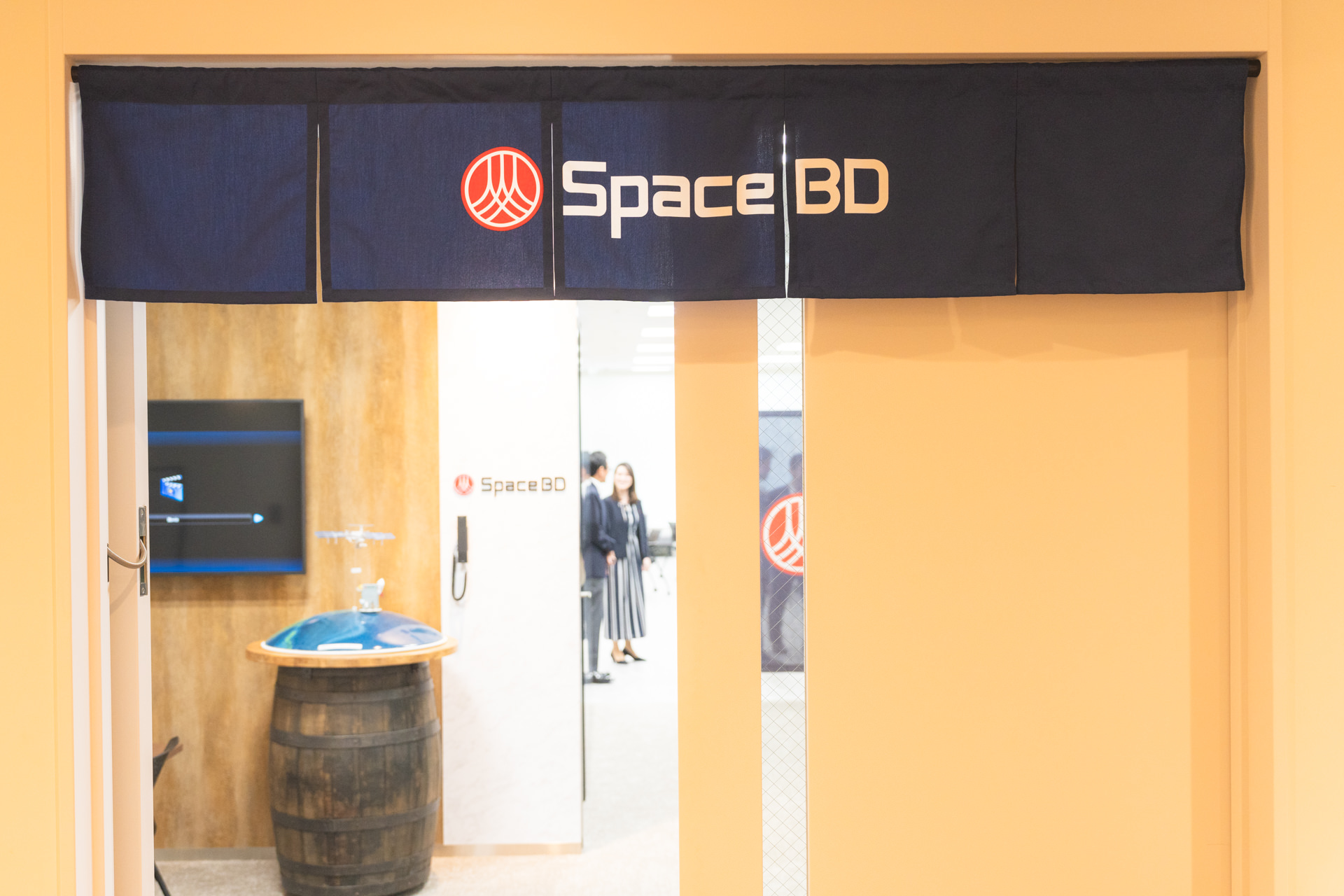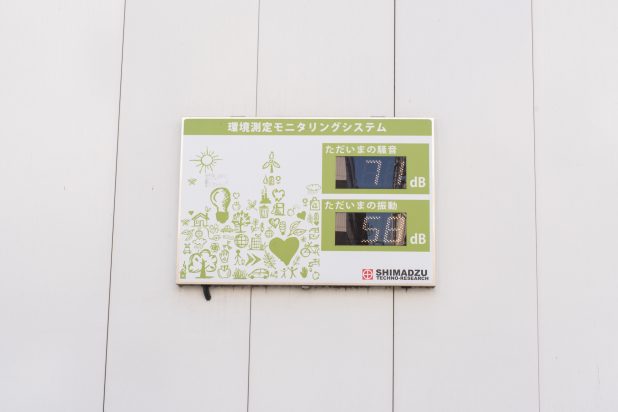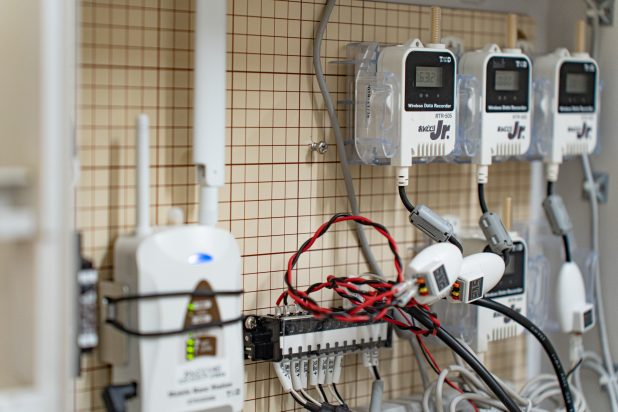Note: Names of organizations, offices, departments, etc. in the article are as of when the article was first published.
What comes to mind when you hear the word “space”?
Perhaps the vastness of space in the stories and movies that fascinated you as a child, or the memory of looking up at the night sky and counting the stars.
This time, we visited Space BD Inc., known as a “space trading company,” to learn about the expanding business opportunities in the space industry. We became interested in Space BD when we learned that T&D data loggers were being used in a JAXA (Japan Aerospace Exploration Agency) related experiment, and were intrigued by the company’s efforts behind the project.
In the interview, Daisuke Takahashi of Space BD and his team shared detailed insights into the technologies that are advancing into space, Space BD’s frontline role in supporting them, and how our temperature loggers contribute to these efforts.
| Date | June 10, 2024 |
|---|---|
| Place | Space BD Inc. |
| Models in Use | TR-71wf, TR-72wf, TR-75wf, TR-71nw, TR71A |
| Purpose | Temperature management during transportation of samples for high-grade protein crystallization experiments |
Q: Could you tell us about Space BD’s business?
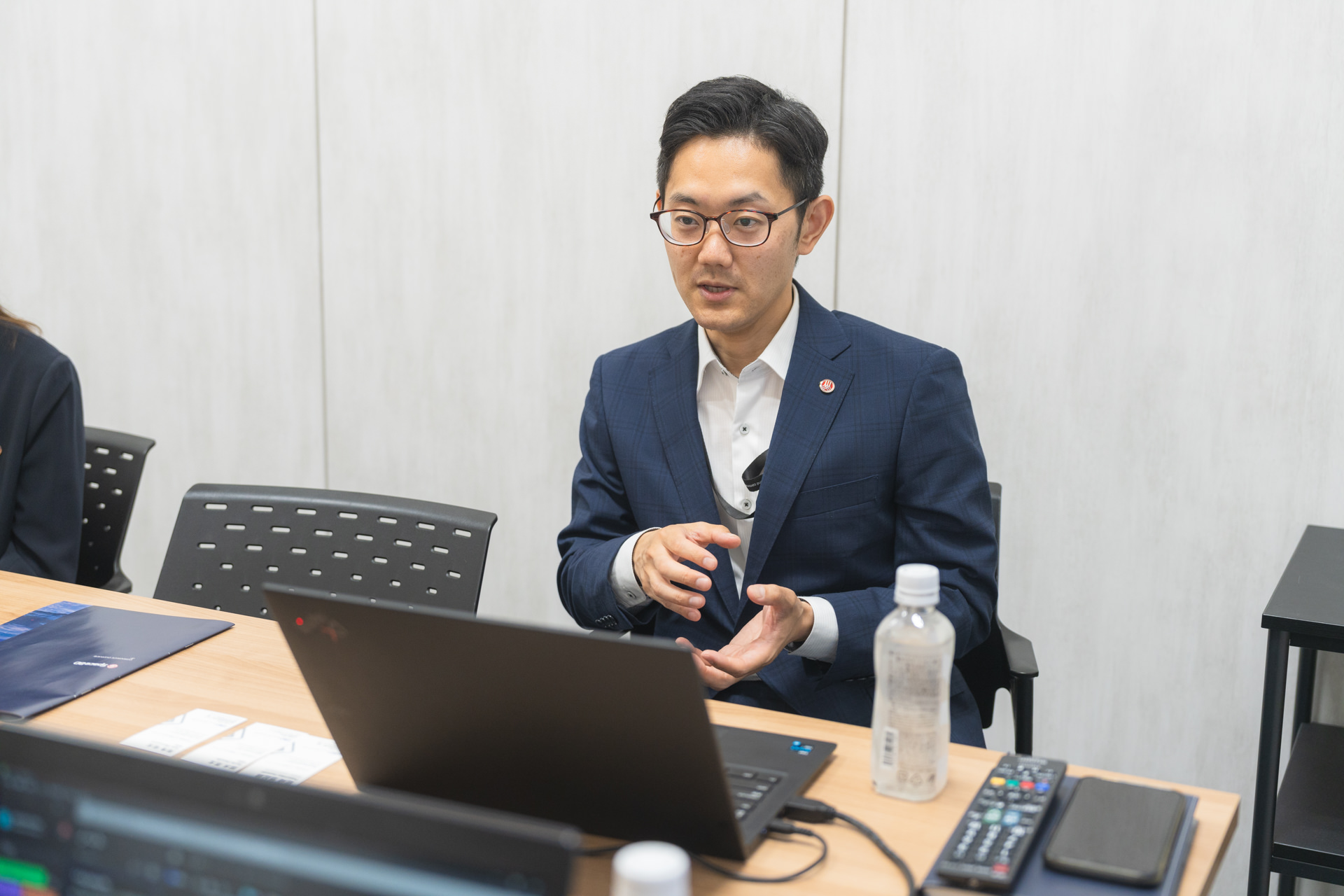
Space BD is a space-focused company aiming to make space more accessible and industrially viable. It was founded in 2017 and now employs about 60 people.
Our mission is to create industries using space as a platform that we can be proud of.
Our core services include satellite launches of all sizes and space utilization projects. For example, we conduct protein crystallization experiments on the International Space Station (ISS), in which T&D data loggers play an important role.
We also engage in branding and education themed around space.
――Can private companies launch satellites through Space BD?
Yes. We support launches for various clients, including private individuals and educational institutions. Even satellites as small as about a 10 cm (≈ 4 in) cube can be launched with our help.
――What can satellites of that small size do?
They can carry cameras or communication equipment. They’re often used in educational and entertainment projects.
――Do you help with the required applications for launches?
Absolutely. We guide clients through the application process, even if they lack a clear mission but have a desire to launch up a satellite.
――Are satellites launched from Earth?
Not always. Some are deployed from the ISS, and we also utilize shared launches on rockets like SpaceX’s Falcon 9.
Q: Can you tell us in what ways do you work with JAXA?
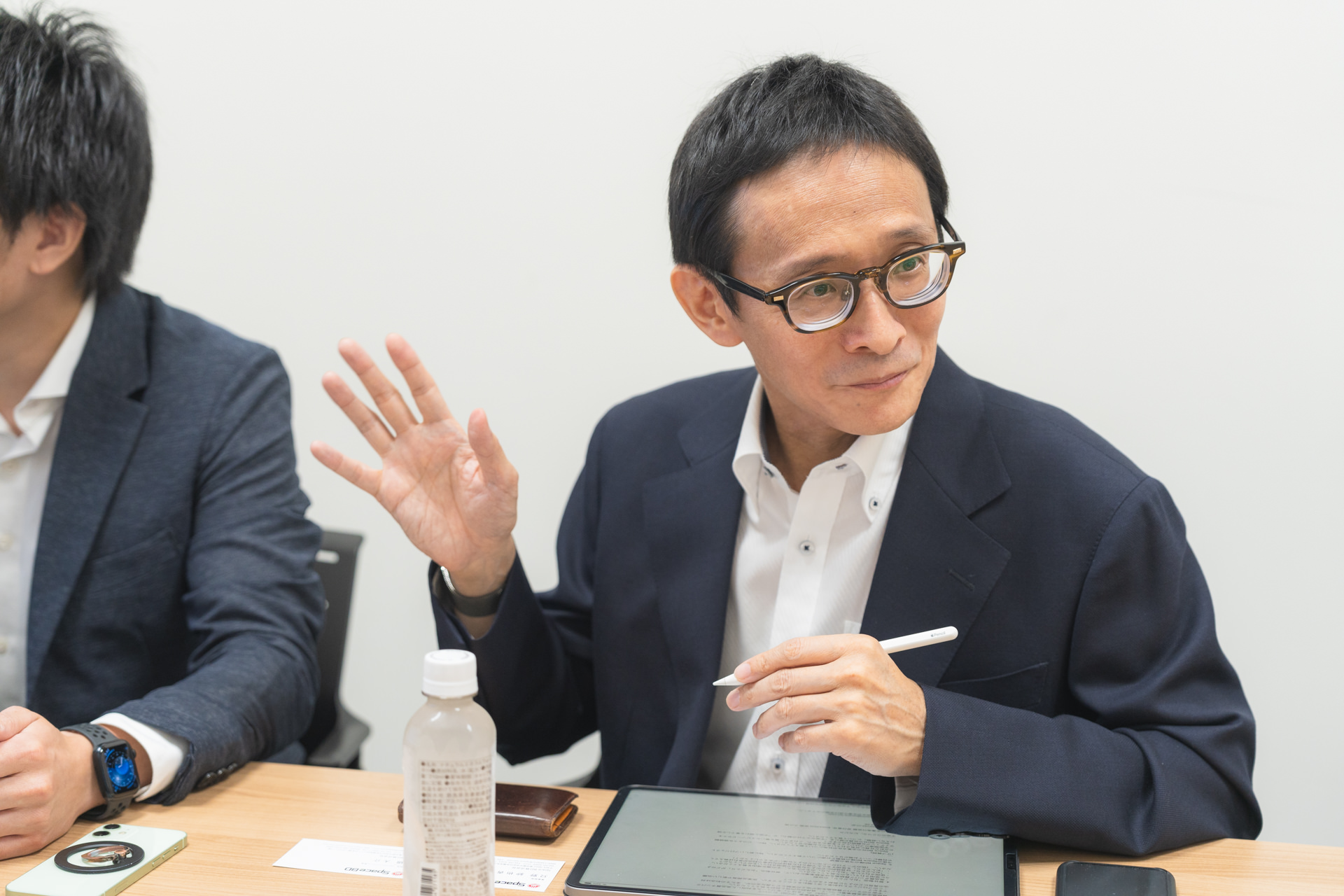
We collaborate closely with JAXA. For example, we offer ultra-small satellite deployment services from the ISS, external experiment platforms on the “Kibo” module, and services via Japan’s H3 rocket and the HTV-X supply ship.
We’re the only company selected for all JAXA’s commercialized launch and ISS usage programs since 2018.
――Did your founding coincide with JAXA’s shift toward privatization?
Yes, our founding aligned with Japan following NASA’s lead in shifting space operations from government to the private sector and we applied to JAXA’s open call to provide these services commercially.
――Do you mean that the rights to use JAXA’s facilities and services are like the rights to broadcast a live sports event, and that the rights to use these facilities and services are used by other companies and academic institutions?
Yes, that is correct. After acquiring the right to use the service, other companies and academic institutions use the right to conduct experiments and services in space. For example, we invite companies and institutions that wish to provide services for use on the ISS, and we work together with them on projects.
――So that means, with your help and support that more companies can now enter the space industry?
That is exactly right. Many people are interested in using the field of space, but they are sometimes put off by the high hurdles involved. In order to lower those hurdles, we carefully explain to them that it is not difficult and make sure they have the confidence to proceed with their experiments and service.
――It sounds like you’re playing a leading role in Japan’s space industry.
We combine strong technical and business development expertise with JAXA’s infrastructure to offer services that can compete globally. We aim to expand commercial space activity in Japan and beyond.
――Does “BD” in Space BD stand for Business Development?
Yes, that’s right.
―― I see! Space sounds like an exciting dream, but in reality, you need a solid business foundation, don’t you?
That’s right. It is important not only to talk about dreams, but also to make solid, steady efforts. We are focusing on the process to ensure results in promoting our space business!
Q: Could you tell us more about the purpose of the protein crystallization experiments and how they are being conducted?
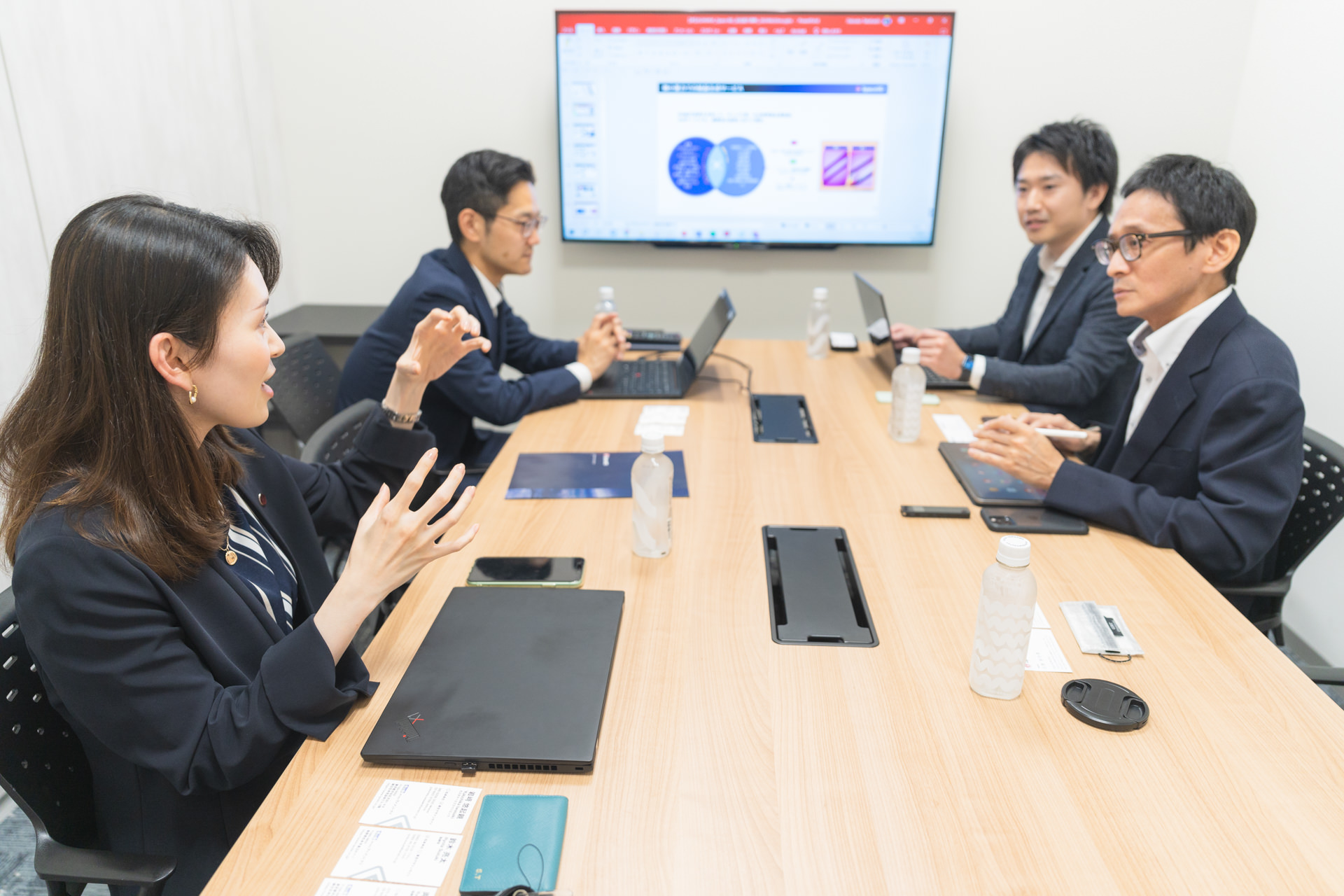
Yes. This is a photo of a protein crystal. Can you see the difference between the ones made on Earth and the ones made in space? In space, because there is almost no gravity (a microgravity environment), it’s easier to produce more beautiful (well-formed) crystals. T&D data loggers are essential for temperature management in these experiments.
――What are the advantages of having beautiful crystals?
When beautiful crystals are formed, it becomes easier to use their data for tasks like in when designing drugs. If the structure of the target protein crystal is clear, more accurate data can be obtained for drug design, which leads to shorter development times and more efficient development overall.
――So having a clearer view of the structure makes drug development easier?
Yes. When the structure of the protein is clear, it’s easier to verify how effective a drug will be. Crystals grown in space are extremely well-formed, making structural analysis easier.
For example, when developing a headache medicine, it’s important that the components of the drug fit precisely with the structure of the protein. Crystals grown on Earth tend to have many imperfections, making it difficult to identify the correct structure. But with crystals grown in space, you can quickly and accurately determine, for example, that a “triangular-shaped component is needed,” which allows for more efficient drug development.
――So things that can’t be grown so cleanly and clearly on Earth can be done well in space?
Exactly. On Earth, convection in the solution caused by gravity makes it difficult to grow clean crystals, but on the ISS, where gravity is extremely weak, crystals can be grown more slowly and more stably.
Q: How specifically are T&D data loggers being used?
For proteins, temperature control and management is crucial—it’s no exaggeration to say that temperature means the life for proteins. We use data loggers to track and make sure that the proteins are transported at the right and stable temperature.
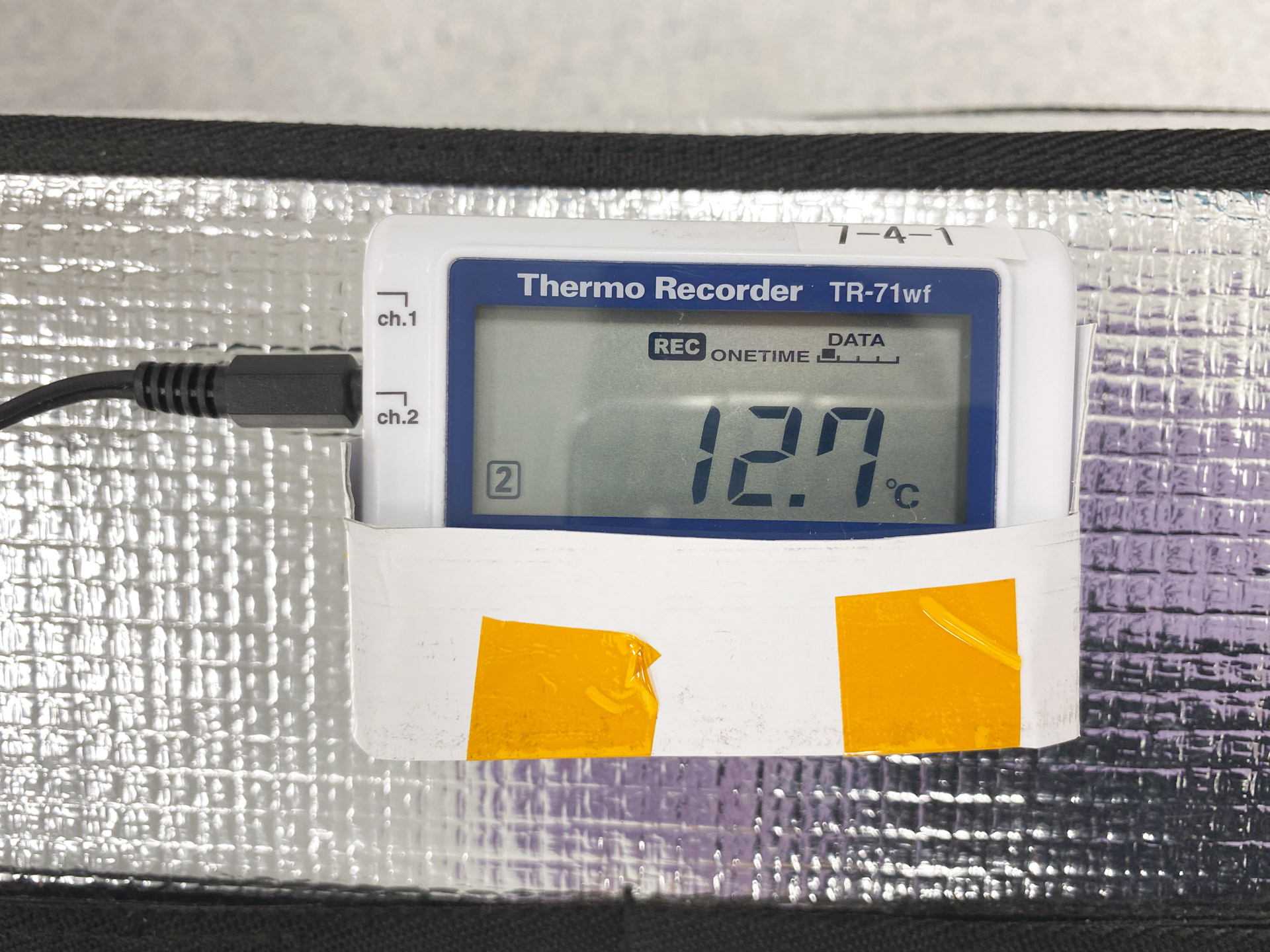
The box in this photo contains protein samples, and the key point is whether the internal temperature stays stable during transport. If the temperature deviates from the set range, the quality of the protein degrades, making it unsuitable for experiments. That’s why we use T&D data loggers during the transport phase to ensure that the temperature always remains within the proper range.
――So it’s used for temperature management during transport—not inside the ISS “Kibo” module, but on the ground.
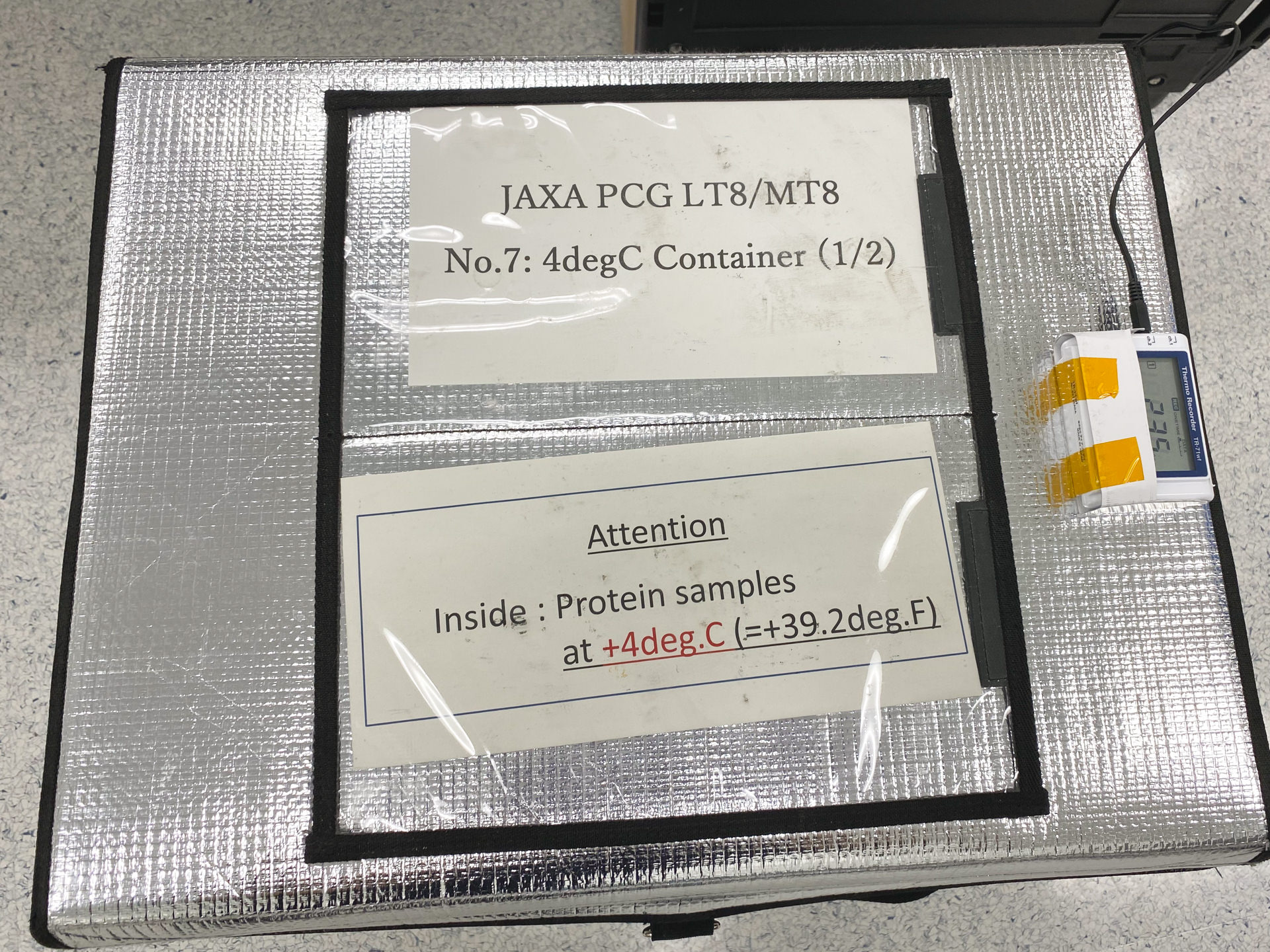
That’s right. It’s necessary to record that the temperature inside the package was properly maintained and also check during transport, so we attach a T&D logger to the box to measure both the external and internal temperatures. Later, we collect the logs (records) to verify whether there were any temperature deviations and, if so, investigate what happened. For example, was the package left outside during transport and exposed to heat?
――Do you also manage not just temperature, but also humidity?
Yes, during the experiment preparation stage in Japan, we also check and manage humidity. We use models that can measure both temperature and humidity for those phases.
――Do you also use our data loggers to manage temperature when transporting samples to launch sites overseas?
Yes. For example, this photo shows preparations being made in a NASA Kennedy Space Center lab (in collaboration with staff from MARUWA Foods and Biosciences, Inc.). T&D loggers are used in such locations, as well.
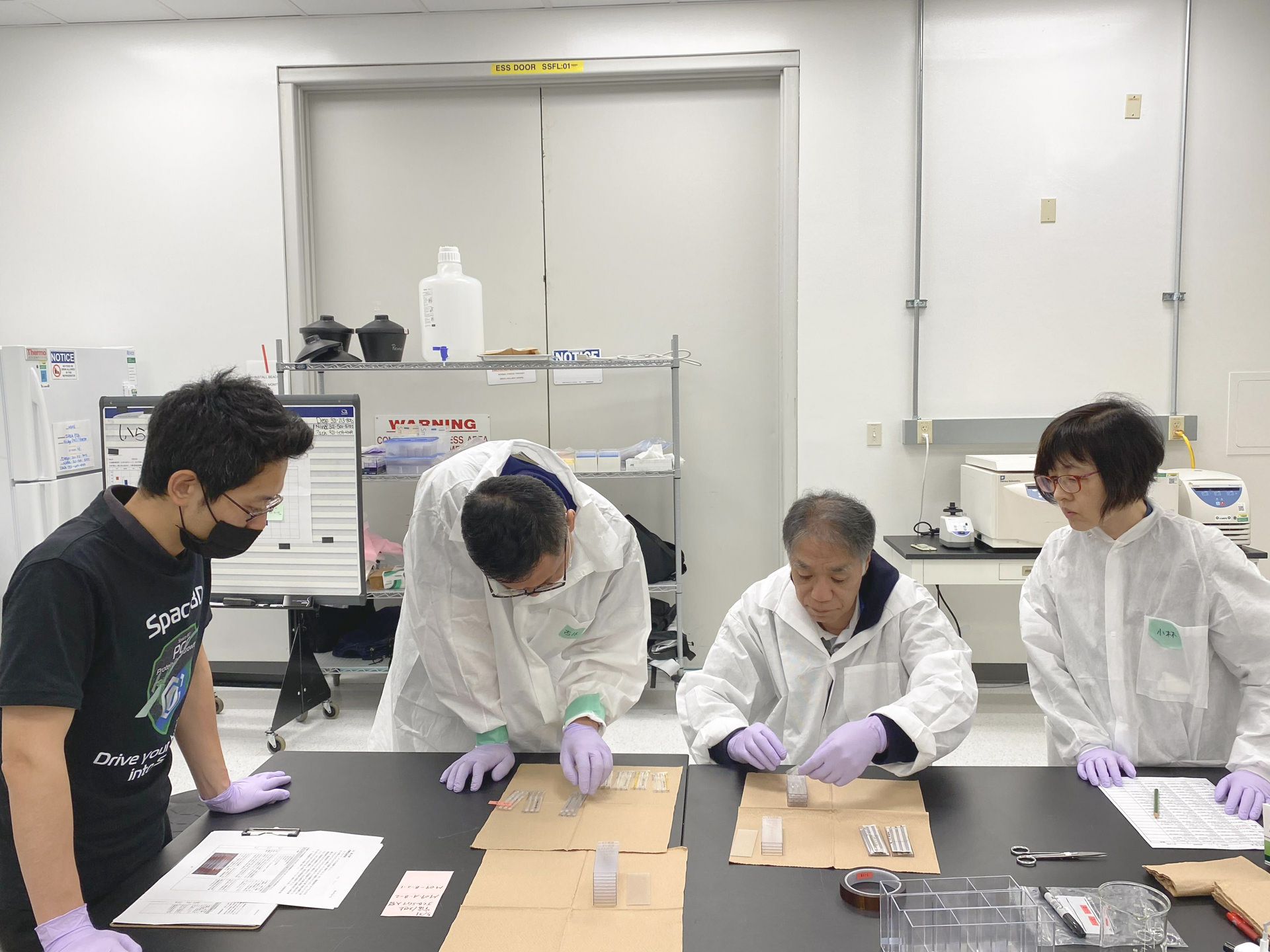
Q: What are the concrete advantages of using T&D data loggers?
The ability to operate them with a smartphone is one huge advantage. Since a network is not required and we can retrieve past data instantly in case something happens, the system is very convenient. During transport, even in places like airports, we can adjust settings and check data easily without booting up a PC.
Also, they can measure a wide temperature range—even sub-zero temperatures—so they can be used even when cold storage is required. Another big advantage is that a single device can measure both internal and external temperatures via two channels.
They also have a large logging capacity and long battery life, so they work well even in long-duration experiments.
(Here, the representative from Space BD showed us the actual smartphone app “T&D Thermo” they use for monitoring temperature.)
With this app, we can quickly view all the data, and by checking it, we can get a general idea of where the protein samples were during transport. It helps us check in when we think “Did anything strange happen?” or feel relieved when “We were worried, but everything was fine.” We can also zoom in on important parts of the graph screen, take screenshots, and share them.
Q: What made you start using T&D data loggers?
We originally started using them because JAXA was using them. We had a period where we considered other products due to export/import requirements when transporting samples to overseas labs, but we ultimately concluded that T&D products were the best. They provide reliable data management and meet our requirements, so we’re very satisfied with their reliability.
――Thank you very much !!
Q: Could you tell us about your branding and educational initiatives?

Many companies approach us saying they want to do something in space but don’t know where to start. For such clients, entertainment-based projects are often a good entry point.
For example, sending a company’s product into space can add value and serve as a unique PR opportunity. Some materials change color after exposure to space, which can then be displayed as tangible proof of their space journey. We once took a CD cover from a global boy band to space and returned it to fans afterward as a special keepsake.
――Are items brought back from space safe to display?
Yes, they can be handled normally. Our staff even carry employee badges that were launched into space. One client sent a product with a QR code into space, and the code remained scannable after return. Traditional craft materials have also been launched and then used to create new products with added value.
――Maybe we should send a T&D logger into space too.
That would be great! We also get inquiries from local governments about using satellite data in rainy regions. Besides satellite launches, we support life science experiments and offer data and projects for entertainment and branding purposes.
We work closely with clients, turning their ideas into reality and showing what’s possible in space. Our role is to offer demonstrations that make space more approachable—because once clients take that first step, they realize they can be part of the space industry too.
――What kinds of educational programs do you offer?
One example is a corporate training program where participants become mock satellite operators. Through this simulation, they learn teamwork and conflict resolution in a startup-like environment.
We also teach university classes on space industry basics and invite guest speakers from aerospace companies to talk with students about space-related careers and innovation.
――That sounds like a popular program.
Space is still an emerging industry, so we’re always thinking about how to grow it further.
Q: Do your team members mostly have a background in space science?
Our team is diverse. About 30% are engineers, many with space or aviation experience. Others joined because they wanted to help build a new industry—some come from apparel, insurance, and other sectors. They bring their unique knowledge to enrich our work.
――It’s surprising that a third of your team are engineers.
It is unusual, especially for a trading company. But having in-house engineering lets us provide more specialized solutions and collaborate closely with clients to build projects from the ground up.
Q: Finally, what is your vision for the future of the space business?
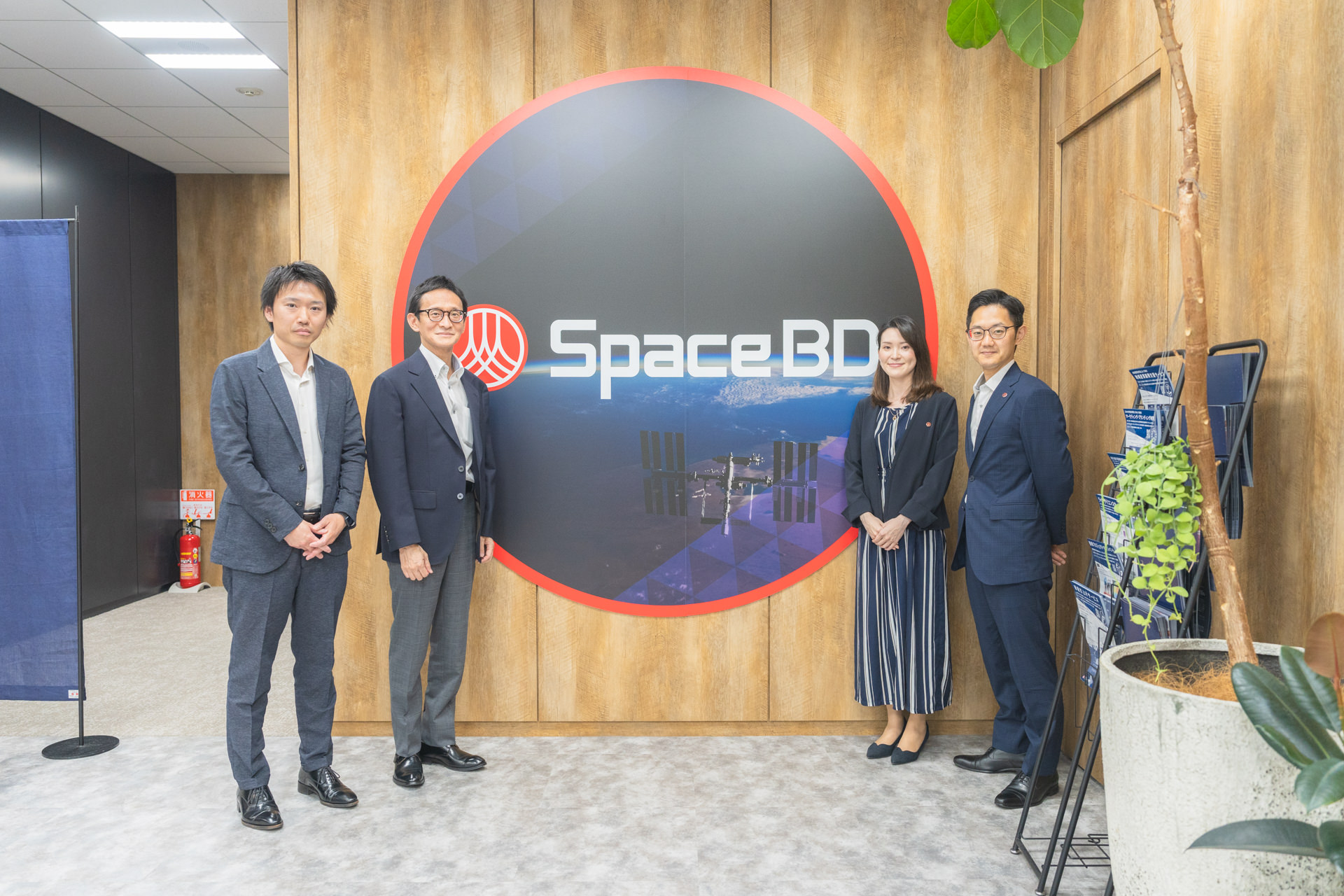
Our goal is to make space more accessible. Through ISS experiments and satellite launches, we want to make more people aware of the benefits of space. Also, by expanding the space industry as a whole, we aim to encourage people from other industries to enter the space industry and make it easier for them to take on challenges.
The space industry is still in its infancy, but as the use of rockets increases in the future, stable manufacturing and cost reductions will progress, and I believe it will become as common as, for example, the automobile industry. Costs will decrease, and a more accessible era will come.
――Wouldn’t it be great if anyone could easily travel to space?
In the future, who knows maybe people in our grandchildren’s generation may be going to space on a date. It would be wonderful if people could go to space on an anniversary and make a toast while looking back on Earth.
――Thank you so much for sharing your precious time with us today. Your talk has made me feel closer to space.
You’re very welcome.
Through this interview, I realized that space is steadily becoming closer to us as a place for exploring business.
Space BD’s efforts have made me feel that space is becoming more connected to our daily lives, and it is very meaningful that T&D data loggers are playing a role in this connection.
We are looking forward to the expansion of new industrial possibilities utilizing space in the future.
